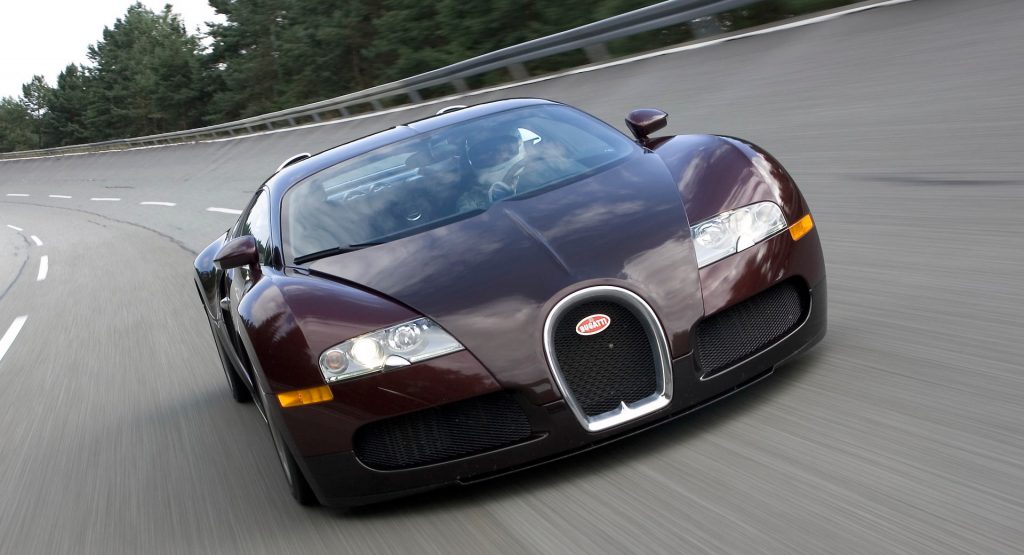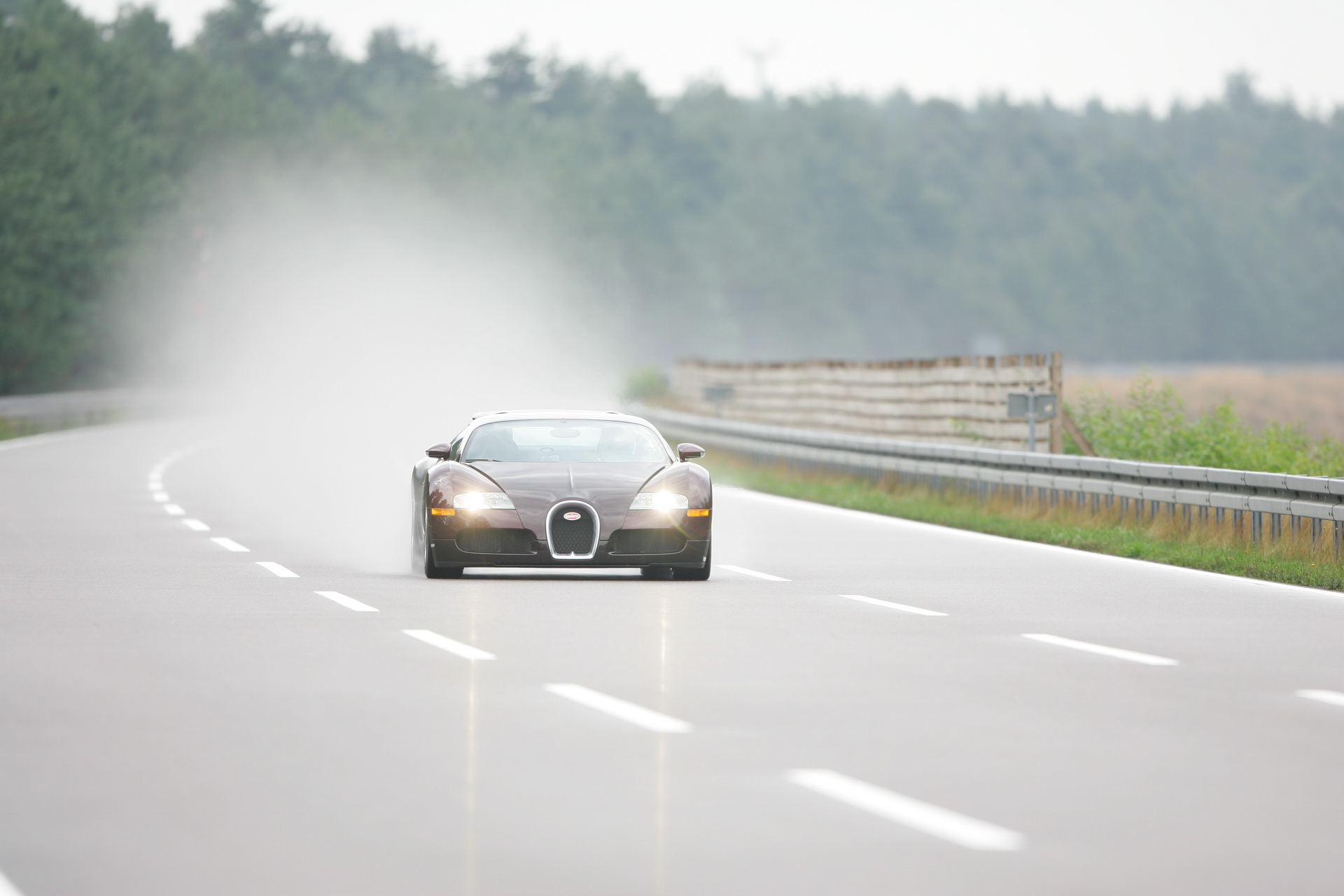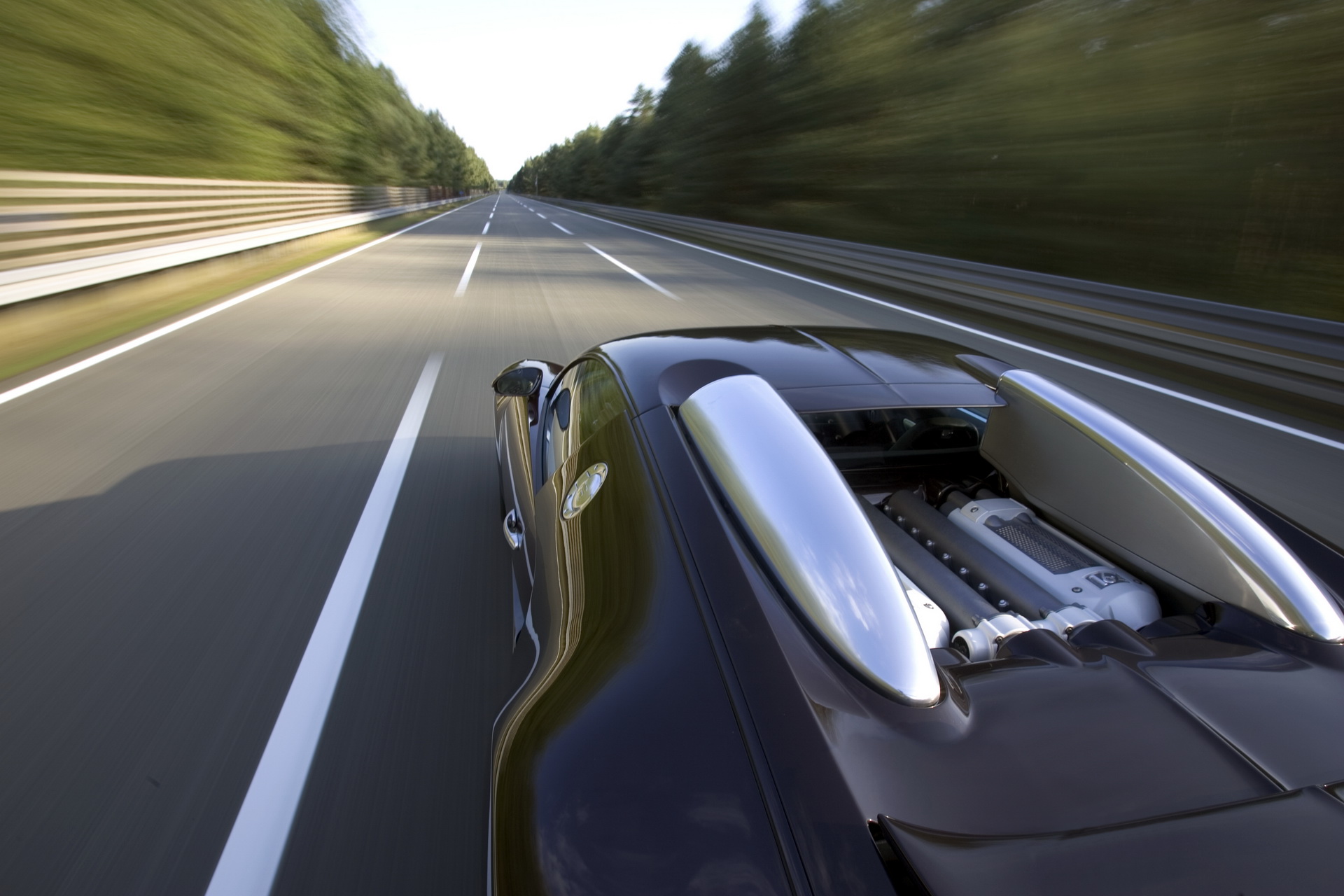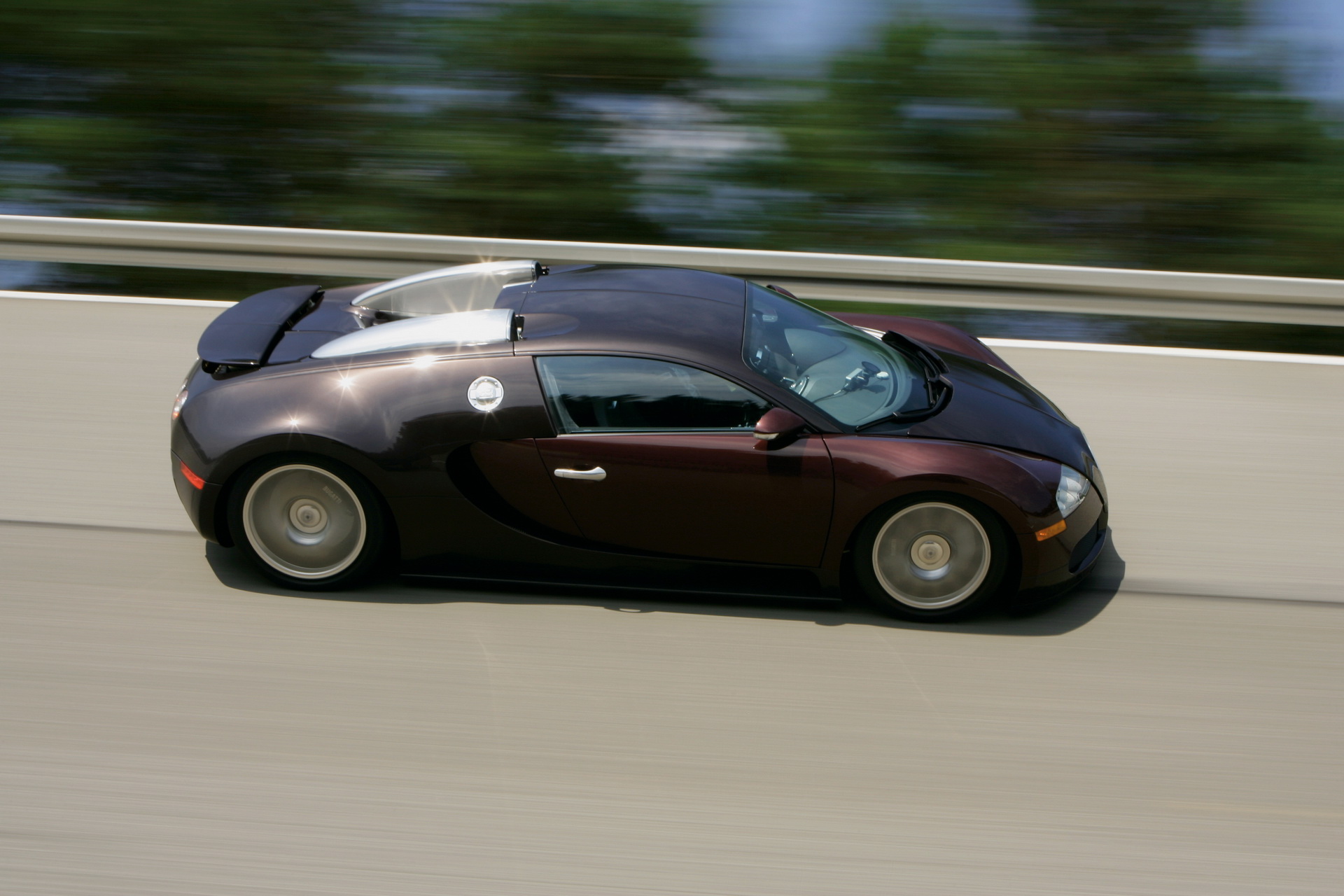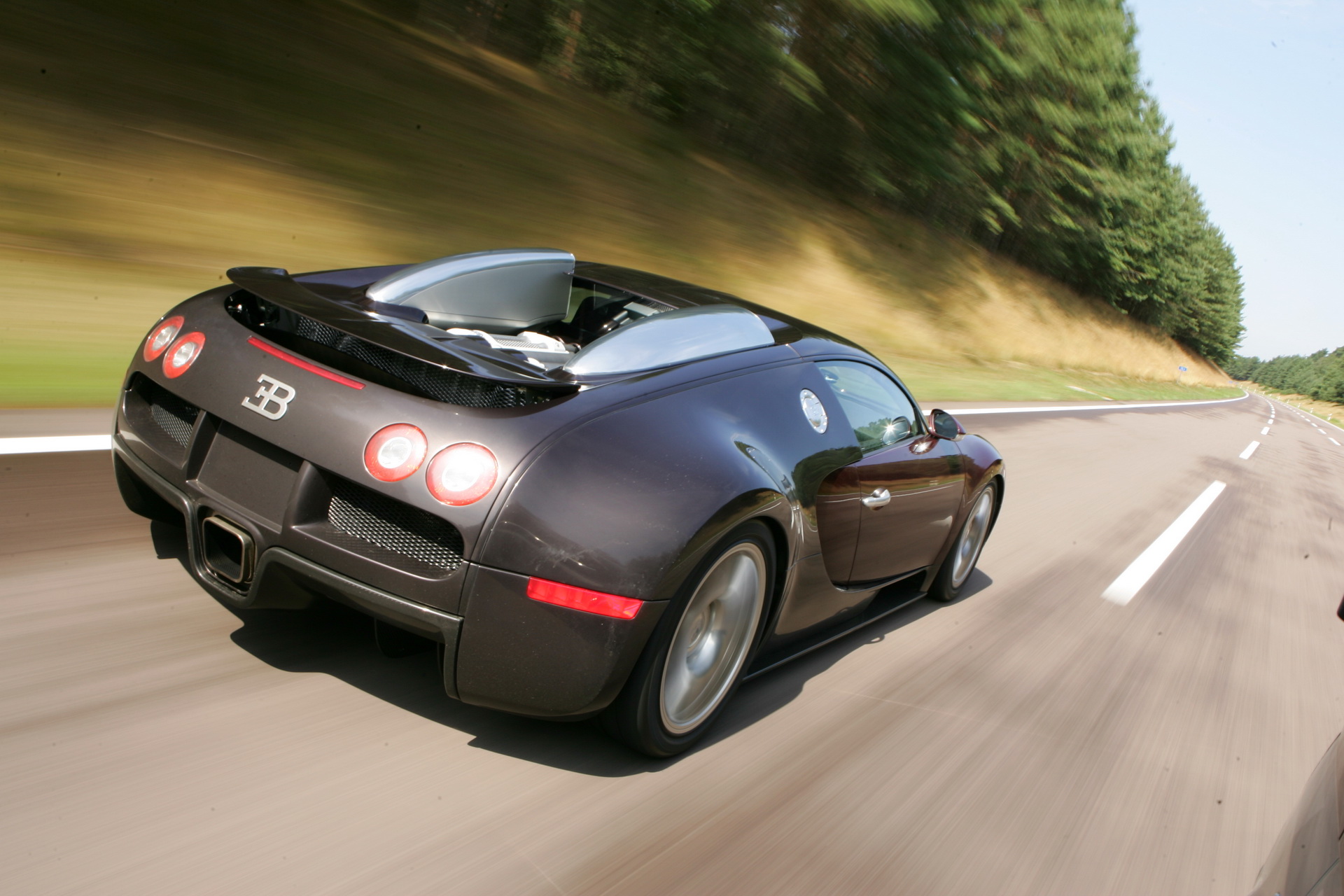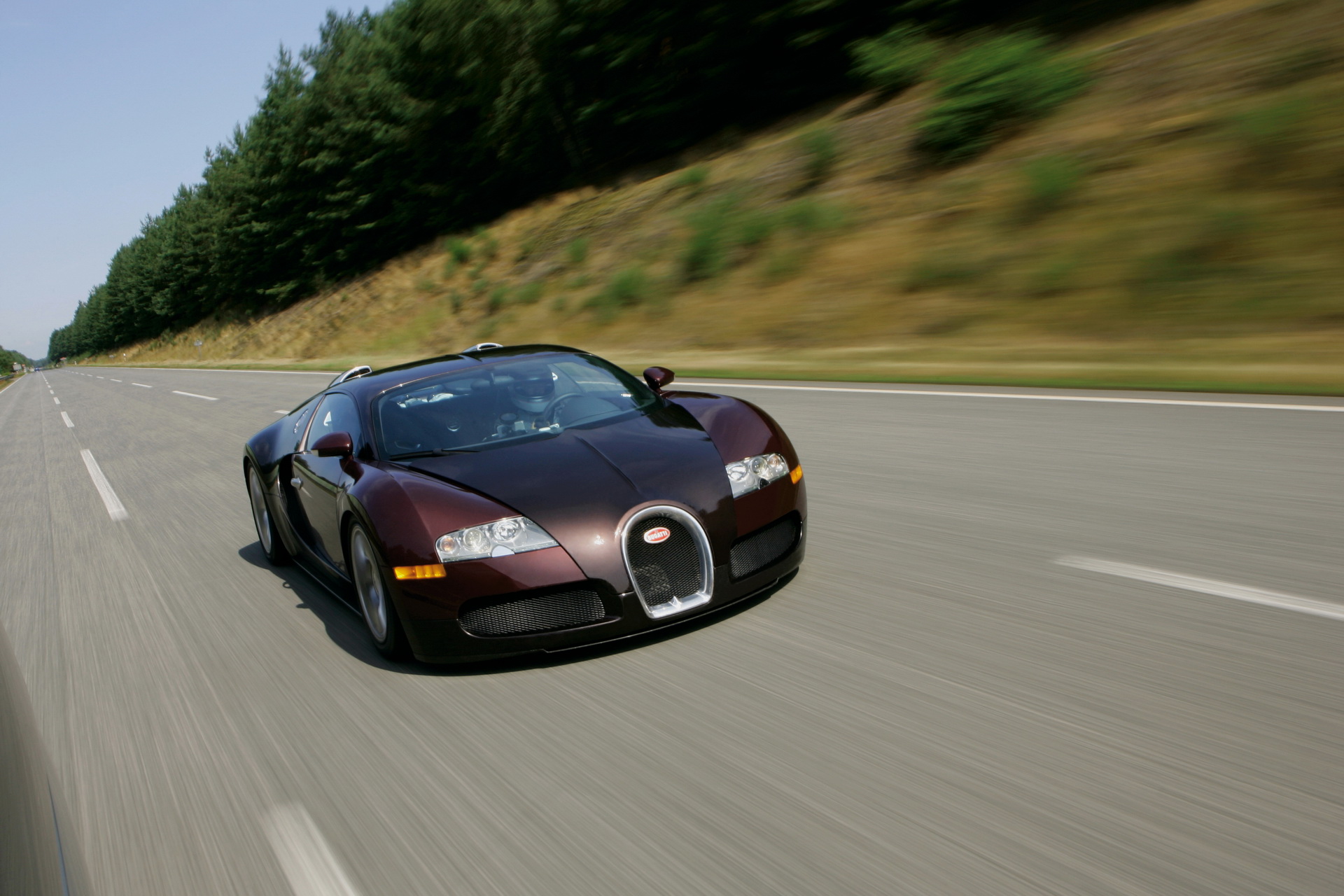Exactly 15 years ago, Bugatti became the first carmaker to overcome the 400 km/h (248.5 mph) barrier with a series production car. The vehicle in question was of course the original Veyron 16.4, the world’s first 1,000+ PS hypercar.
The Veyron’s 8.0-liter quad-turbo W16 engine produced a total of 1,001 PS (987 HP) to go with 1,250 Nm (922 lb-ft) of torque, distributed to all four corners with the aid of a 7-speed dual clutch automatic.
It needed just 2.5 seconds to hit 100 km/h (62 mph), while 200 km/h (124 mph) took just 7.3 seconds. As for zero to 300 km/h (186 mph), that could be done in 16.7 seconds.
Watch: World’s Loudest Bugatti Veyron With Aftermarket Titanium Exhaust Sounds Like Khaleesi’s Dragon
The goal however was to break the 400 km/h (248.5 mph) mark, more specifically the 406 km/h (252 mph) record held by the legendary Porsche 917 on the Hunaudières Straight.
“Bugatti has been at the pinnacle of automotive engineering for over 110 years. With the Veyron 16.4, Bugatti not only unveiled what can be called the world’s first hyper sports car in 2005, but also achieved an unbelievable speed record,” says Bugatti president Stephan Winkelmann. “Even 15 years after the record, it is still a car of sheer power, speed and elegance in a timeless design. An icon of automotive history. I have the greatest respect for the achievement, courage and willpower of the team back then. They really did create an extraordinary car.”
Test driver Uwe Novacki was calm when he climbed into the Veyron back in April of 2005, and yet understood all the implications of what he was tasked with doing.
“I wasn’t nervous before the drive, and I wasn’t afraid, but I did feel respect. Even though I was used to driving regularly at high speeds, this speed range was a whole new dimension. No-one had experience of this.”
Initially, Novacki took the time to familiarize himself with the Veyron in France on a track near the Molsheim site. In his first test run, he only reached 380 km/h (236 mph), but the second time around, well, here’s how it went down in his own words:
“The car was very quiet, perfectly tuned, and I could immediately tell that the engine was really giving off a lot of power. I cautiously approached the speed range. On the first lap, I drove around the steep bend at 230 km/h which was too fast and the car became unstable. I took the next bend at 220 km/h and the car felt more stable,” he explains.
“Before I came out of the bend, I accelerated as hard as I could to get the full 1,001 PS out of the Veyron’s engine. I was so impressed with how stable, effortless and safe the car felt at 400 km/h.”
At the end of the straight, the Veyron had reached an amazing 411 km/h (255 mph), although the record had to be measured in both directions. In the end, the value entered in the type approval documents was 407 km/h (253 mph), making the Veyron the world’s fastest series production car at that moment in time.
More records followed suit
In June of 2010, the Veyron 16.4 Super Sport and its 1,200 PS maxed out at 431 km/h (268 mph) with French racing driver Pierre-Henri Raphanel behind the wheel. Then, in April of 2013, the open-top Veyron 16.4 Grand Sport Vitesse became the world’s fastest street-legal roadster by hitting 408.84 km/h (254 mph).



